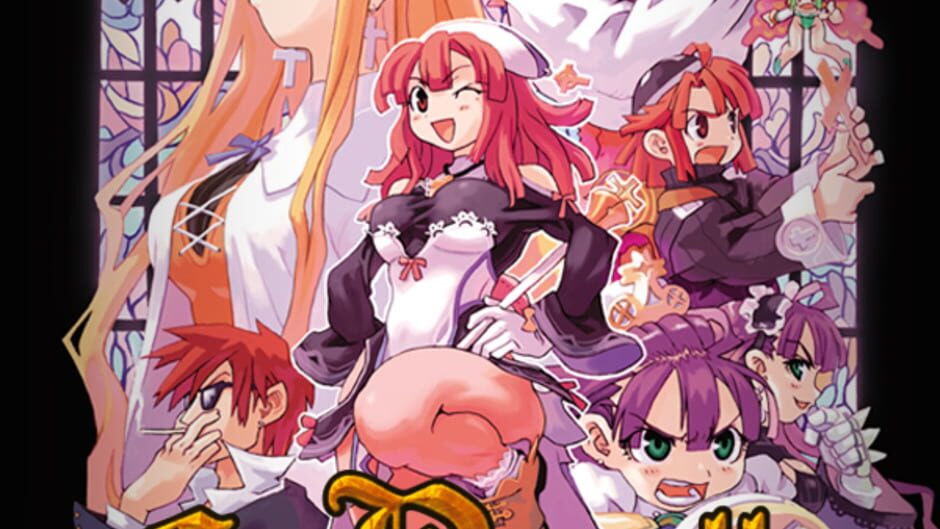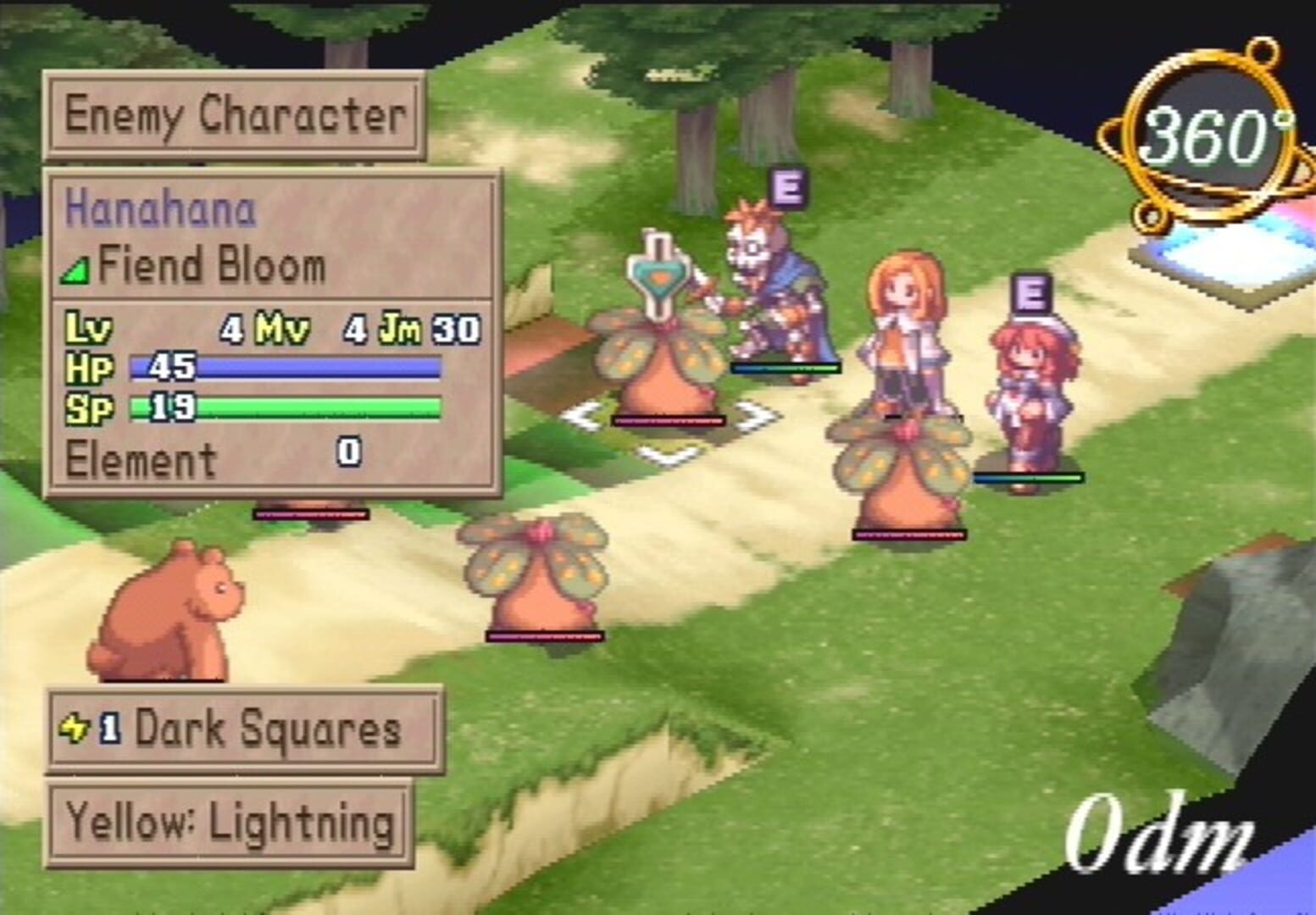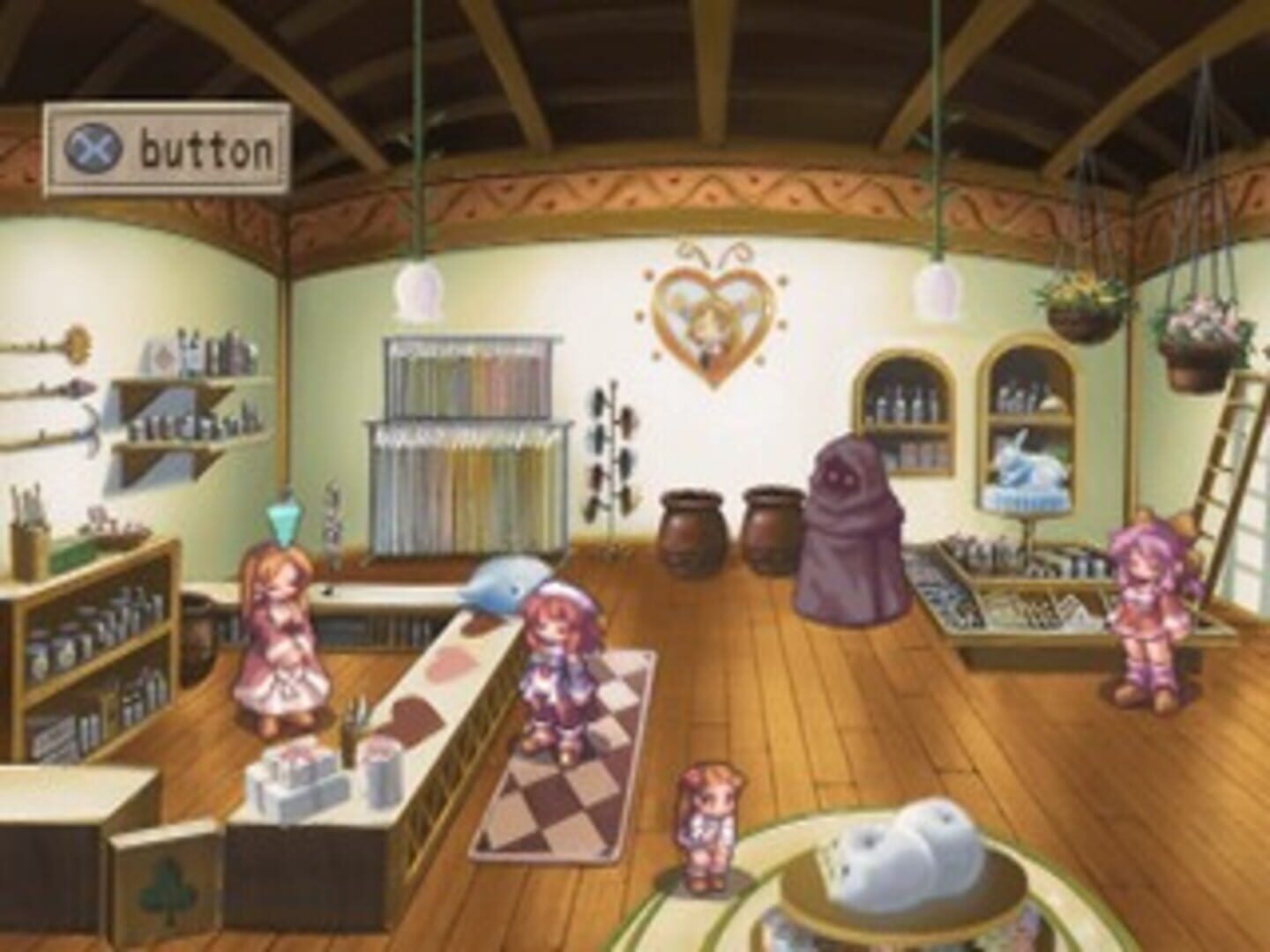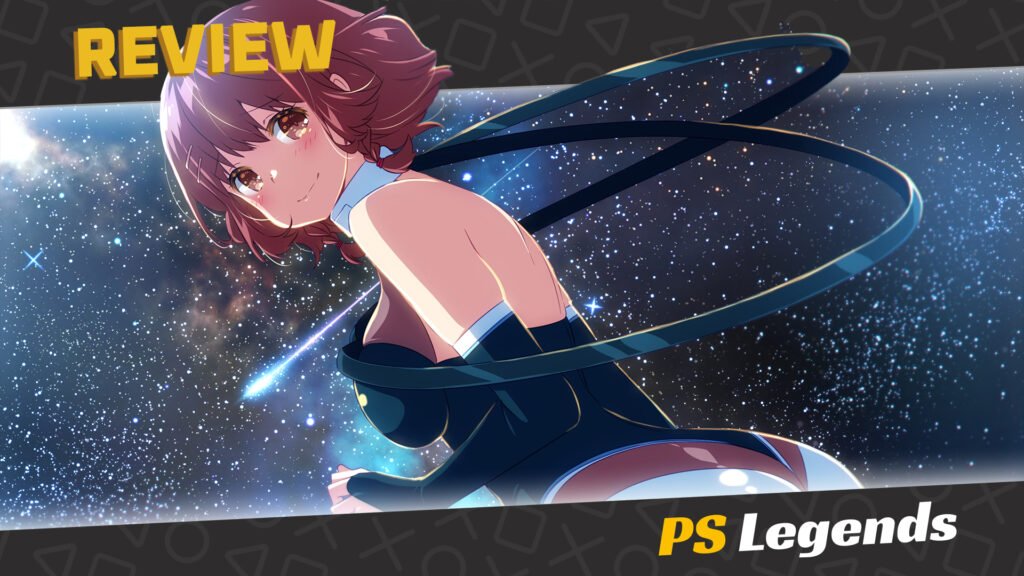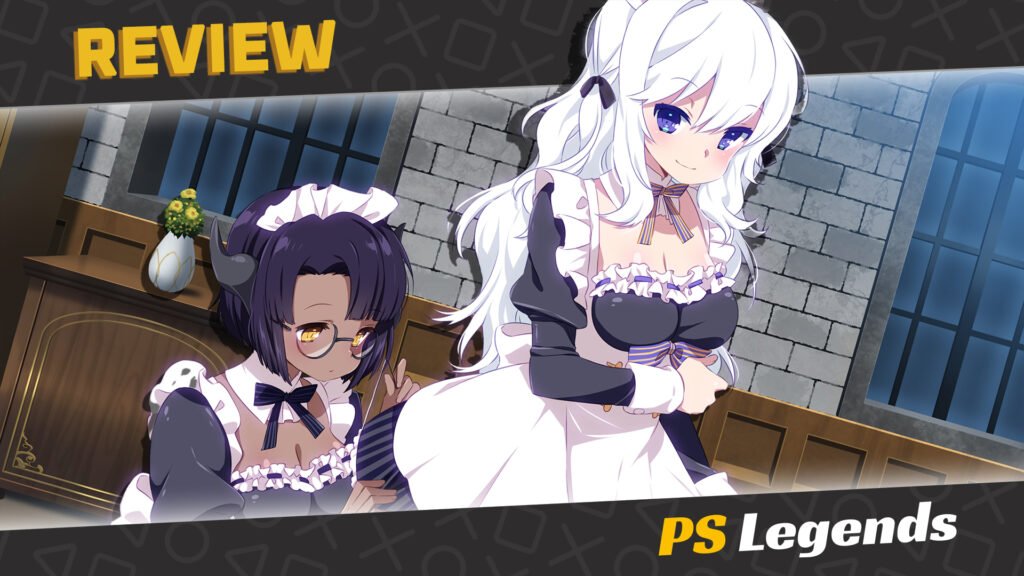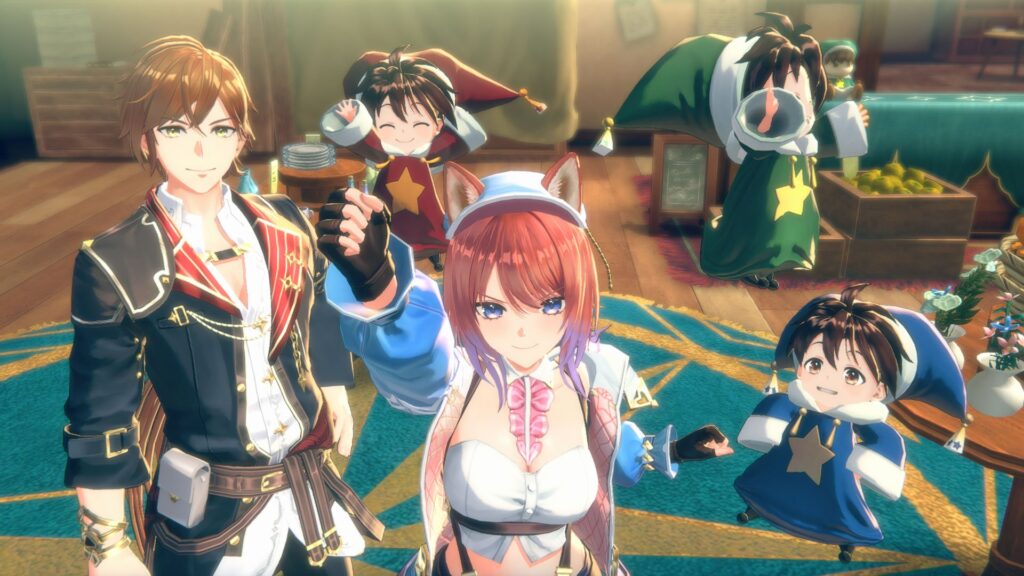We’re really going back in time today. As a special treat, I’m revisiting the very first review I ever wrote. Of course, I won’t be reposting it in its original state unless you want a two-paragraph Amazon product review. It doesn’t even come close to my current standards, so I hope you’ll excuse me while I edit, cut, expand, and generally bastardize my own work in what is essentially a total rewrite.
On This Page
Introduction
Today, we’re tackling a rare beast: an elusive Strategy JRPG. Only three series on PlayStation spring to mind for this genre, two of which are sadly no longer around. They would be Shining Force, Final Fantasy Tactics, and pretty much the sole survivor, Disgaea, yet even this has fallen into obscurity somewhat.
Being a series set around power-leveling and increasing the number and efficiency of units in your party, Disgaea was more at home on the PS2, a time when lazier gamers could fire up their Action Replay/Gameshark devices to cheat-code their way to god-like status. When playing the series on modern consoles, progressing legitimately for as much as 200 hours per game is an often unrewarding task.
Disgaea is just one part of an ever-expanding universe, a collection of games that includes other light-hearted, anime-demon-themed games such as Phantom Brave, Mugen Souls, and Makai Kingdom to make a series which I’ve been referring to as the Netherworld Saga because of the setting. You can borrow that if you like.
In actuality, Disgaea: Hour of Darkness is not the first game in this saga, but the third, with the first being the lesser-known musical RPG Rhapsody on PS One, a game I sadly missed due to its botched European release. Today’s game, La Pucelle: Tactics would be the second in this series.
Story
La Pucelle: Tactics begins in the kingdom of Paprica. The story centers around the adventures of the Church of the Holy Maiden followers in the city of Pot a Feu. In addition to the typical role of a church, it has a group of trained demon hunters known as La Pucelle.
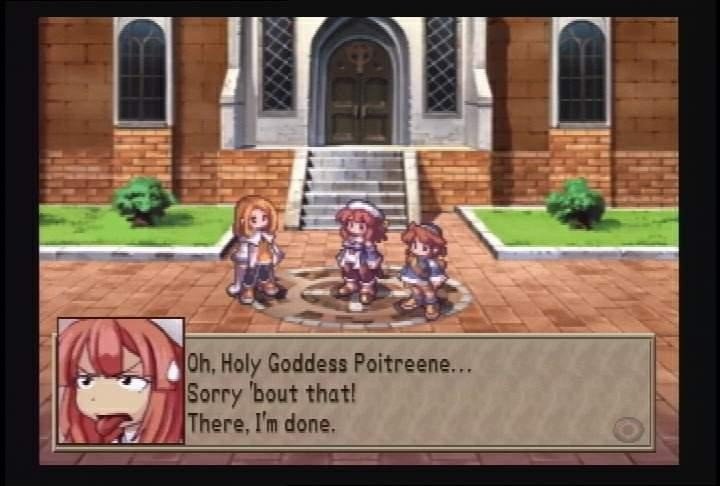
The player controls the loud, curvaceous, 16-year-old demon hunter, Prier, who, with her 12-year-old brother Culotte and squad leader Alouette, form La Pucelle’s newest battalion. The party must venture out into a massive world of demons, monsters, and magic to purify the growing darkness.
Prier also has to contend with a fierce rivalry with Alouette to become the iconic religious martyr known as the Maiden of Light, as well as her growing feelings for a mysterious demon hunter, Croix, who joins her in her journey, and the legend of a Dark Prince who will rally the demon army.
The Dark Prince, favored servant of the fallen angel Calamity, will reportedly rise to scourge the land. When the prince rises, the Maiden of Light will challenge him and restore the balance of light and darkness, but perhaps there’s even more to this legend than first thought.
The game has a gripping storyline with plenty of blossoming friendships and alliances as more characters join your quest. The latter half of the game also features a couple of shocking plot twists, giving the story an impressive climax.
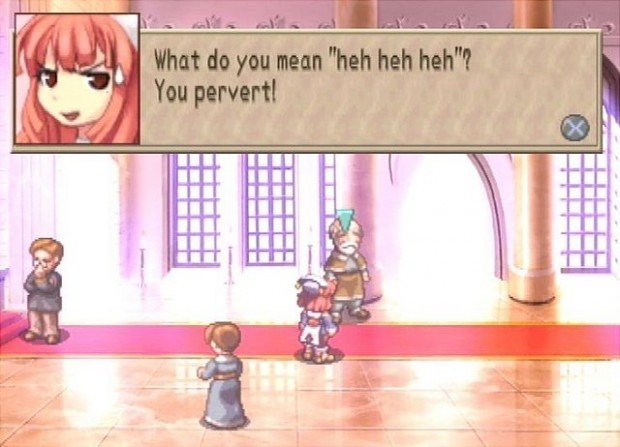
Gameplay
There’s a charming simplicity to the gameplay which amplifies the game’s appeal, with your party members represented as 2D sprites on isometric 3D backgrounds who can be moved a set number of grid squares each turn to advance on the enemy, many of whom you can actually capture, purify, and enslave.
Each battle begins with a set number and arrangement of enemies, a base panel, and Dark Portals scattered randomly around the map. Combat takes place on a separate screen and involves the attacker, their target, and adjacent friendly units. Attackers and targets have one chance to move and attack per turn.
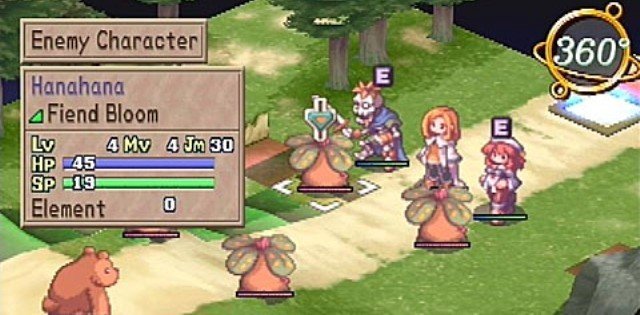
Dark portals are gates to the Dark World, releasing a stream of dark energy that runs in one direction until it meets a character, enemy, or obstacle. Although obstacles stop the energy, the stream will be redirected in the direction faced by a character. A character facing opposite to a stream of dark energy will stop it like an obstacle. A dark portal will release a new enemy on the map if left uncovered for several rounds.
Purification is a La Pucelle member’s ability to use the power of Poitreene. In battle, purification closes dark portals and converts monsters. When a dark portal is purified, the character’s purification power is subtracted from the portal’s hit points. When converted, monsters join the party after they’re defeated. Each purification increases the chance of a monster converting.
A monster who has joined the party can also be trained. After finishing a map, training consists of actions chosen by the player from a randomly generated list. A trained monster can be used in battle or sent to the Dark World, where they are used in wars between the Demons.
Each level has a Dark Energy Index measuring its dark energy. Acts during battle (such as leaving dark portals unpurified, attacking allies, and opening presents) increase dark energy, and purifying the map decreases it. When the Index reaches 100, a portal opens, which can be used to enter the Dark World (a series of randomly generated levels full of enemies and dark portals). The strength of Dark World enemies varies. The higher the Dark Energy Index, the stronger the enemies. Don’t worry; this is much simpler than it sounds.
Graphics/Sound
The presentation of La Pucelle: Tactics has a lot of charm to it, but it’s essentially a tweaked version of the engine used in Rhapsody, so it isn’t exactly state of the art. Like it’s PS One predecessor, the game looked old even when new, bringing forward the overly grainy and pixelated imagery typical of the PS One over to the PS2.
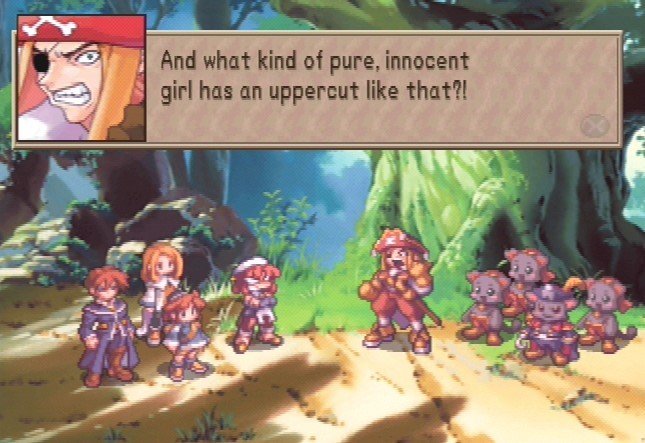
The menus and entire game engine are the same as what’s used in Disgaea. If you played Disgaea first, this one will look similar as the characters here are expressive, often amusing, and smoothly animated, but during battle, they tend to get clumped together to the point where it can be difficult to discern who’s on whose side.
The 3D maps aren’t extraordinary, though La Pucelle: Tactics also features some lovely hand-painted artwork during the story. Altogether, it’s a passable-looking game featuring some brightly colored special effects alongside some cheap-looking ones, such as how defeated characters vanish.
Censorship rears its ugly head here, too. It was released in North America with nearly every cross removed, including those on Prier and Alouette’s clothing. The shape of Croix’s gun was modified, and his iconic cigarette was removed from his character portraits and sprites. The spell animations were also altered, and the Dark World was initially called ‘Hell’.
Mastiff explained the changes in an interview before the game’s release. According to Bill Schwarz of the company, “There are well-organized forces that work hard to punish software makers and sellers for what they consider religious transgressions. As a very small and brand-new publisher without deep pockets, we need to pick and choose our battles.” Fair enough. I think we can let that slide.
As for the game’s audio, La Pucelle’s bombastic soundtrack is reminiscent of Disgaea’s, but some of the short, upbeat music loops here are the sort of stuff that can drive one mad after a while, especially when coupled with a slow-paced game. The sound effects are nothing special, but the English voice-over is where the game makes an unfortunate stumble.
The writing features an upbeat tone and light comedy from VA icons, including Jennifer Hale, Cam Clarke, and Quinton Flynn of Metal Gear Solid fame, though it’s not exactly their best performance since the game features recurring French themes and terminology that the American actors frequently mispronounce.
Yes, it would seem I’m not the only one who’s bastardizing their own work. Their pronunciation of ‘Croix’ is particularly nauseating. Perhaps I should try to forgive that since a certain friend of mine (sorry, Kevin) couldn’t even manage the title successfully. Please do your homework, guys.
Conclusion
By removing Disgaea’s mandatory emphasis on the randomized levels featured in the Item World and player-customized guest characters, you can focus more on actual story-related gameplay and less on the grinding, either expertly rushing the combat or skimming the story sequences to get your playthrough down to around 30 hours.
Alternatively, savoring the story and mastering the Dark World and its associated true ending can bring your playtime up to the 100-hour mark. This makes for a far more interesting twist on the ending while introducing the Prier you’ll be familiar with from her guest appearances in the Disgaea games.
It’s a joy to pick up and play with iconic characters you’ll miss once it’s over. I’d love to see La Pucelle revived and properly remastered on PS5, with nice shiny trophies. Exploring the next chapter of Prier’s journey in a proper sequel wouldn’t be a bad idea either.
Joys
- Fun characters
- Great story with plenty of twists
- Simple gameplay
Cons
- Weak visuals
- Sloppy voice-acting
